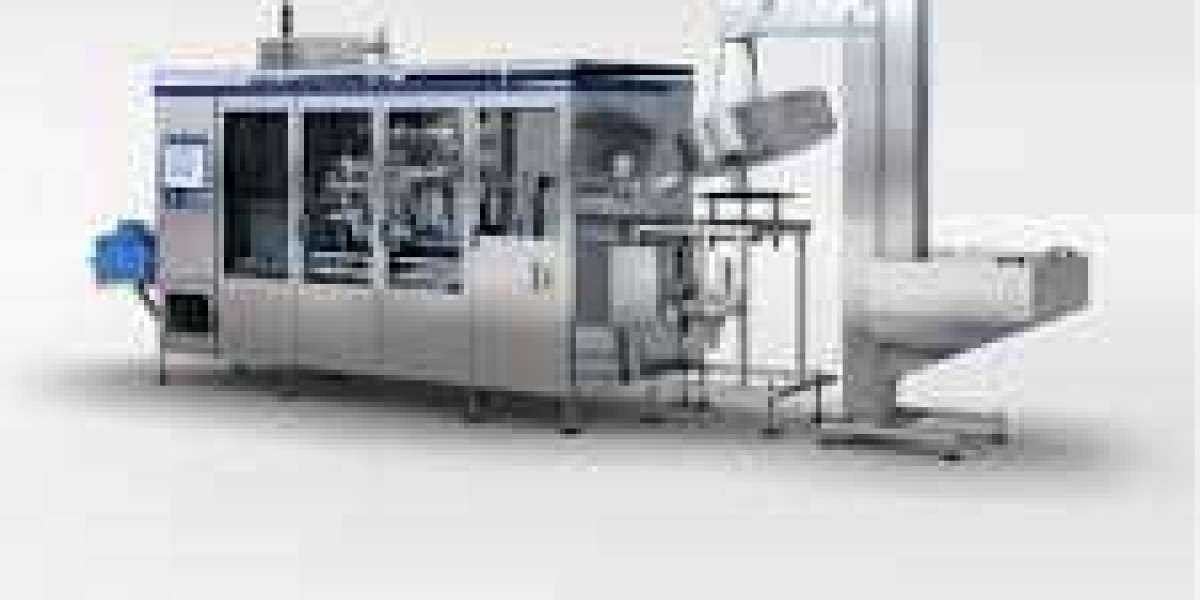The cap applicator market is a rapidly evolving sector driven by technological advancements and increasing consumer demand for packaging automation. Cap applicators are vital to many industries, from food beverage to pharmaceuticals and cosmetics, where the need for secure, tamper-evident seals is essential. As global manufacturing continues to demand higher output, greater efficiency, and enhanced product safety, the role of cap applicators becomes ever more crucial. This article delves into the factors driving the growth of the cap applicator market, the challenges faced by manufacturers, and the emerging opportunities shaping the future of the industry.
Market Overview and Key Applications
Cap applicators are devices used to securely apply caps or lids to containers, ensuring that products are sealed safely and consistently. These systems are used in a variety of industries, each with its specific requirements for sealing containers. The cap applicator market can be segmented into three primary sectors:
- Food Beverage: Packaging plays a vital role in the food beverage industry, with cap applicators ensuring that products like beverages, sauces, jams, and dairy products are sealed to prevent spoilage, contamination, or leakage. The growing demand for packaged food, particularly in emerging markets, is fueling the expansion of the cap applicator market in this sector.
- Pharmaceuticals: In the pharmaceutical industry, the integrity of the seal is critical to maintain the safety, sterility, and effectiveness of medications. Cap applicators in this sector are designed to meet strict regulatory standards, such as those set by the FDA, and are often equipped with tamper-evident or child-resistant closures to prevent misuse.
- Cosmetics and Personal Care: Packaging plays a significant role in branding and consumer appeal in the cosmetics industry. Cap applicators in this market need to handle a wide variety of cap designs, sizes, and materials while ensuring that the product remains sealed and free from contamination.
- Industrial and Chemical: For chemicals and hazardous materials, cap applicators ensure that containers are securely sealed to prevent leaks or accidents during transport and storage. In these industries, safety and precision are paramount.
Key Drivers of Growth in the Cap Applicator Market
The cap applicator market is being driven by several factors:
- Automation and Increased Production Demands: With the global push toward automation in manufacturing, industries are increasingly relying on automated capping systems to improve production speed, reduce labor costs, and maintain consistent product quality. Automated cap applicators enable high-volume production, often with minimal human intervention, which is essential for industries like food beverage and pharmaceuticals.
- Technological Advancements: Technological innovations such as servo-driven motors, AI integration, IoT connectivity, and vision inspection systems are transforming cap applicators into more efficient, reliable, and intelligent machines. These technologies enable faster changeovers, higher throughput, and enhanced precision, which are critical for meeting growing consumer demand and maintaining product quality.
- Sustainability Trends: Sustainability is a key driver of change in the packaging industry. Consumers are increasingly looking for eco-friendly products, and businesses are adopting sustainable packaging solutions. Cap applicators are evolving to accommodate these new materials, such as biodegradable plastics and recyclable caps. As sustainability becomes a higher priority, demand for cap applicators capable of handling eco-friendly packaging materials is expected to rise.
- Regulatory Compliance: Increasing regulatory requirements, particularly in sectors like pharmaceuticals and food beverage, are pushing manufacturers to adopt more secure, tamper-evident, and traceable capping solutions. Cap applicators are being designed to meet these regulatory standards, particularly with respect to food safety, pharmaceutical integrity, and consumer protection.
Challenges in the Cap Applicator Market
While the cap applicator market is growing, manufacturers face several challenges:
- High Capital Investment: Automated cap applicators can be expensive, especially for small- and medium-sized enterprises (SMEs). The upfront cost of purchasing and installing sophisticated equipment can be a significant barrier for companies operating on tight margins.
- Maintenance and Downtime: As cap applicators become more advanced, maintenance can become more complex. Equipment breakdowns can lead to significant downtime, which can be costly for businesses with tight production schedules. Regular maintenance and skilled technicians are required to keep the machines running efficiently.
- Material Compatibility: With the shift toward sustainable and recyclable materials, cap applicator manufacturers must design machines that can handle a variety of cap types and materials. The need for flexibility in handling different packaging formats—while maintaining high production speeds—poses a challenge for equipment manufacturers.
Emerging Opportunities in the Cap Applicator Market
- Smart Packaging and IoT Integration: As manufacturers increasingly embrace the Internet of Things (IoT), cap applicators are becoming more connected and intelligent. Smart packaging, which enables the tracking and monitoring of products through sensors and RFID technology, is an emerging trend. IoT-connected cap applicators allow for real-time monitoring and predictive maintenance, improving efficiency and reducing the risk of unexpected downtime.
- Customized Packaging Solutions: With the rise of personalized and niche products, the demand for customized packaging is growing. Cap applicators that offer flexibility and can handle various container sizes, shapes, and cap designs will be highly sought after. Manufacturers that can provide solutions for short production runs, special editions, or unique packaging designs will find ample opportunities in the market.
- Expanding Markets: Emerging markets, particularly in regions like Asia-Pacific and Latin America, present significant growth opportunities for cap applicator manufacturers. As these regions experience rapid industrialization and urbanization, the demand for packaged goods is expected to rise, creating new markets for cap applicators.














